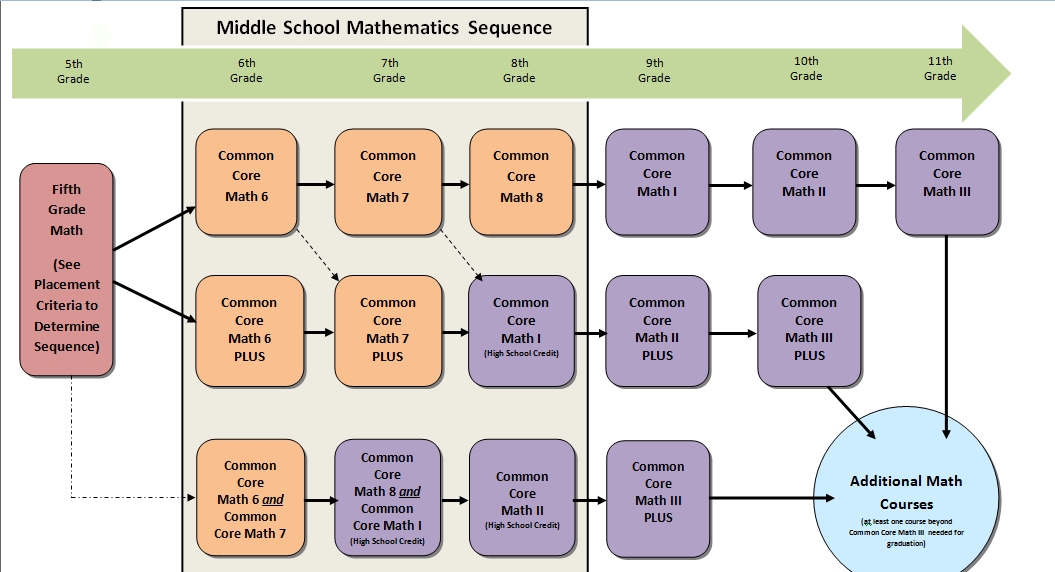On Tuesday, the Wake County school board voted to approve a long-debated and many-times-revised math placement policy that will enable more eight graders to enter Algebra I.
Research in Wake from 2006-07 had shown in that children who took Algebra 1 by eighth grade were less likely to drop out of high school. The policy was revised several times since then, but never so decisively.
Here’s what the new policy will mean for Wake County:
The biggest direct impact of the new math placement policy is that all students will now be put a on a math track as they enter sixth grade. Previously, students could be placed on a higher track much earlier.
Math Flow Chart
The two upper streams of the flow chart represent the two tracks that will be available in 2012-13. The track represented lowest on the chart will not go into effect until 2013-14. It will be the most rigorous track and staff are still developing the criteria for which students will be allowed to enter it. Click to view larger image.

This change is based on the adoption of new national and state policies called the Common Core Standards and Essential Standards. Those standards intensify the rigor of elementary school math and they streamline the content.
“All kids will come into Middle School with the same opportunity, having had the same K-5 content,” said Ruth Steidinger, senior director of middle school programs.
She also noted that since academically gifted programs start in third grade, some of the content will still differ.
Previously, K-5 students were allowed to have math content from multiple years (fifth and sixth, for example) compacted into one year. They were also allowed to skip content.
The new standards will eliminate repetition of elementary school content as well as compacting and the ability to skip.
Once students get to fifth grade, an EVAAS test score (a predictor of student performance developed by SAS) will determine for what math track the student is eligible.
If a student has a 70 percent probability or greater of passing Algebra I, based on their EVAAS score, they will automatically be placed on a track to take it by eighth grade.

This aspect of the plan was the most hotly debated by the board. Members Kevin Hill, Susan Evans and Jim Martin voted against the new plan, because they believe the 70 percent mark was too low.
“Pushing people, who I’m going to call at-risk, into a higher level just doesn’t make sense,” Martin said.
Democratic board members Christine Kushner and Keith Sutton voted with the four Republicans in support of the plan. Sutton’s decision was based on a last-minute change, which would require schools to meet with families of children in the 70 to 79 percent range before those children were put on the eight grade Algebra I track. It would also guarantee them extra resources.
“It’s important that we go further than just inform or encourage, but that the student is guaranteed support,” Sutton told the Record.
Even though he ultimately voted against the plan, Martin asked for one other last-minute change: the ability to move down a track. Originally, the plan allowed students to move up a track, but Martin’s provision allows teachers to also recommend students for a lower track.
Steidinger said her department has created “gap documents,” which ensure that students who change tracks don’t skip content.
As part of the placement policy Algebra I also gets a new name. It will be called Common Core Math 1 and encompass much more than the old Algebra I, Steidinger said.
